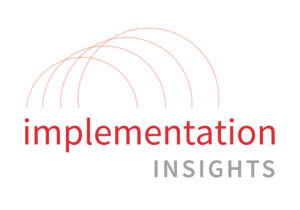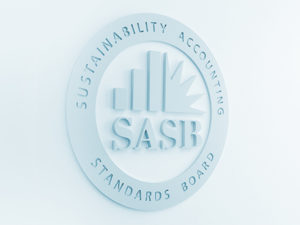
Jeff Cohen, CAIA, Head of Private Investment Initiatives and Director of Capital Markets Integration, SASB
Integrating environmental, social, and governance (ESG) factors into the investment process is both celebrated and maligned in private equity. If you look across the industry, you see a lot of encouraging signs from general partners (GPs) taking important steps forward, but also a lot of opportunities for significant improvement beyond surface-level commitments that are unlikely to advance either value or values.
In a recent Intertrust survey of 150 private equity fund managers, an overwhelming majority (88 percent) said they plan to step up their efforts to manage and measure ESG performance among portfolio companies over the next two years. Another survey of 162 private equity firms conducted last year by PwC showed a vast majority (72 percent) either used or were developing KPIs to track, measure, and report on progress against their ESG policies.
The drivers behind these actions are increasingly well understood. They include:
- Demand from limited partners (LPs): According to a Morgan Stanley survey of 110 global institutional asset owners, 95 percent are integrating or considering integrating sustainable investing in all or part of their portfolios.
- Evidence of financial relevance: Several meta-studies, including one conducted by Deutsche Asset Management and the University of Hamburg, show the majority of studies have found that ESG integration had a positive effect on corporate financial performance.
- Regulation of ESG disclosure: Regulatory activity is increasing globally, including the EU’s Sustainable Finance Disclosure Regulation (SFDR) and taxonomy for sustainable activities, which cover both EU and non-EU entity products (including alternative investment fund managers) being marketed in the EU.
These tailwinds aside, the eventual holistic adoption of ESG practices and disclosure of related data faces significant challenges that are both structural and perceived.
Practical Headwinds
In a recent Intuitional Investor op-ed entitled “Private Equity Makes ESG Promises, But Their Impact Is Often Superficial,” the authors appropriately point out that, “Notwithstanding the progress of the past decade, private equity ESG implementation remains unformed, discretionary, and varied.” Their analysis uses the practices of Principles for Responsible Investment (PRI) signatories as a proxy for the PE industry’s ESG integration. They found a very small percentage of GPs are signatories, and of those, even fewer disclose ESG reporting from portfolio companies or if, where, and how ESG considerations influence their investment decisions.
A by-product of highly variable approaches to ESG integration is that many (46 percent) of GPs are concerned that by using their own ESG scoring methodologies they may leave themselves open to accusations of greenwashing. Additionally, other obstacles include perceived difficulties with cost and resource constraints, as well as managing multiple sources of ESG data.
I’ll add another challenge both guiding the industry and inhibiting further adoption: the highly complex, interconnected, and dynamically shifting ESG ecosystem. Those not fully dedicated to understanding this ecosystem and its practical benefits and implications throughout the investment process and other fund-management functions will likely find it difficult to make meaningful progress.
All this said, these challenges are neither insurmountable nor overly burdensome if tackled with a strategic approach.
‘How-To’ Guidance
There is a myriad of resources freely available to GPs on how to effectively integrate ESG considerations. Consultants, academics, and NGOs have created libraries on topics such as policy development, embedding ESG factors into effective due diligence, informing useful post-investment action plans with portfolio companies, as well as collecting decision-useful KPIs from portfolio companies. One such example is, Grant Thornton’s ESG in Nordic Private Equity report, which steps through the fund lifecycle with useful and practical market-informed detail. The report cites the work of the Sustainability Accounting Standards Board (SASB) as key component of best practice for deal sourcing and due diligence.
In addition to SASB Standards, the Grant Thornton report also references the recommendations of the Task Force on Climate-related Financial Disclosures (TCFD) and the Sustainable Development Goals (SDGs) as core elements of thoughtful ESG integration. However, among the initiatives available to GPs, these key frameworks and standards are just the tip of the iceberg when it comes to navigating the ESG ecosystem.
Traversing the ESG Landscape
Despite the seeming complexity they face, GPs are beginning to find clarity through focus. They’re streamlining sources of ESG data and combating greenwashing allegations by transparently using widely recognised, independent resources and financially material ESG standards as foundational inputs to their proprietary scoring and assessment methodologies.
For example, Generation Investment Management and Partners Group demonstrate leading practice in Integrating ESG Holistically in Private Equity: A Strategic Approach, a new paper in which SASB has set out to define, clarify, and illustrate the value that standardised data can bring to the investment process amid this dynamic and interconnected ecosystem. Using this approach, a GP, at any point in their ESG journey, can adopt a more curated view of the ecosystem, helping identify and operationalize key guidance from its interconnected components.
Given this report’s conclusions, which echo other valuable guidance from the industry, why haven’t GP’s broadly been able to address these challenges? Having the right tools at hand isn’t always enough; it’s equally important to understand why, where, and how to use them.
From Cost Center to Value Driver
Assuredly there are structural impediments to progress on ESG integration, including limited access to information from portfolio companies and only newly available technology resources to scale and use that data. Perhaps more fundamentally, there is a generalized lack of commitment to managing these issues through fully dedicated internal resources—especially in North America. The previously cited PwC survey indicates that the number of dedicated responsible investment or ESG teams is on the rise (at 35 percent of firms, compared to 27 percent in 2016). However, it is notable that the survey’s respondents were highly concentrated in Europe.
Still, that’s a relatively small number among investors in the region that is widely considered to be at the vanguard of ESG integration and which is driving much of the global ESG agenda forward. The reason why comes down, once again, to a question of perception. As the Institutional Investor op-ed suggested, it’s easy to “make ESG promises,” but it’s relatively more difficult to change behaviour, and harder still to change minds.
Despite the growing body of research that indicates otherwise, many still don’t understand the value ESG can add to a GP’s enterprise and, as such, view these activities as a cost instead of an investment in the long-term viability of the organisation ignoring or unaware of the value creation these professionals can bring to deals and funds. When ESG is viewed through a cost lens, it makes sense to defray as much as possible by outsourcing ESG responsibilities to consultants and charging deal-specific fees back to LPs as a fund expense.
Integrating with Conviction
Whether ESG is primarily outsourced or built internally by a GP, successful integration is marked by teams of investment, legal, risk, and investor relations professionals integrating ESG into their current responsibilities. When a largely outsourced model is coupled with a committee of existing staff who add ESG as a token secondary or tertiary responsibility—without in-house expertise, it’s little wonder that ESG integration seems burdensome. As I engage with investors across the industry, I’ve found that such approaches, while arguably cost-effective and potentially conducive to incremental progress, typically struggle to institutionalize ESG expertise in a way that enables organisations to successfully adapt alongside this dynamic field. Dedicated and qualified professionals focused on ESG’s relevance as a risk mitigator and value driver—who can train their teams on integration tend to pay dividends in sourcing, due diligence, portfolio company value creation, LP reporting, fundraising, and demystifying the ecosystem’s germane content.
Consultants, academics, and NGOs do amazing work and will always have a valuable place to help advance the field and practical application of ESG integration. Meanwhile, however, LPs are increasingly ESG-savvy, raising the pressure on GPs to ensure their sustainability commitments ring true. Although the tools and resources are out there, the more important hurdle may be internal. A perspective shift its what’s truly needed among GPs to recognise the value of how in-house capabilities can make their enterprises fit for purpose in 21st century markets.
Jeff Cohen, CAIA, is Head of Private Investment Initiatives and Director of Capital Markets Integration for the Sustainability Accounting Standards Board (SASB).




